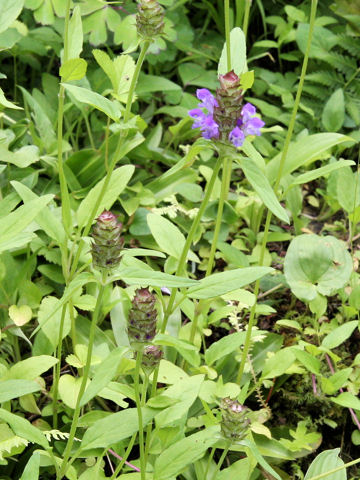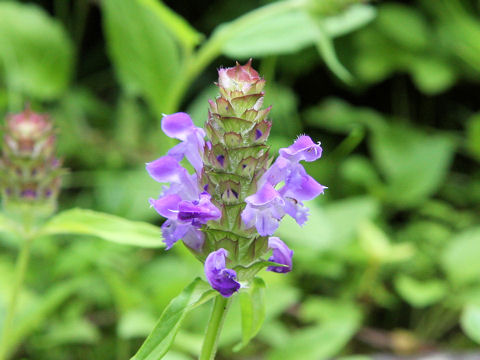 |




|

|
íªÌ{BAnûÈk©çkC¹Açñ»êÉkAWAɪzµÄ¢Ü·BRÑÌnÈÇɶ¦A³ÍQO`ROZ`ÉÈèÜ·B½nÌu¤ÂÚ®³ièÔjvÉĢܷªAÔãɳ´}ðo³È¢ÌªÁ¥Å·BtÍ·È~óâj`ÅζµAt¿ª èÜ·BV©çW²ëAs¸ÉóÔð¾µANâ©ÈÂFÌO`Ôð穹ܷB
|

|
V\ÈEc{OT®Ì½NÅAw¼Í Prunella vulgaris ssp. asiatica var. aleuticaBp¼Í èܹñB
|

|
The "Miyama-utsubo-gusa" (Prunella vulgaris ssp. asiatica var. aleutica) belongs to Lamiaceae (the Mint family). It is a perennial herb that is distributed northward from Chubu district of Honshu to Hokkaido in Japan, the Kuril Islands and North East Asia. This herb grows in sub-alpine grassland and can reach 20-30 cm in height. It resembles to the Sel-heal (Prunella vulgaris ssp. asiatica), though it is defined that the runners do not bear after flowering. The leaves are oblong-lanceolate and arranged oppositely with petioles. The racemes are borne on the stem apexes, and the bright, bluish-purple, labiate flowers bloom from July to August.
|

|
Èاúõsuåt®úõA¨vÉÄA2010N0626úBeB
|

